Helen Oakey is CEO of Renew and, with Sustainable House Day 2025 upon us, she talks to us about the climate crisis and what people can do at the scale of the home.

Helen Oakey.
April 30th, 2025
Behind the Brand is about getting to know the real design enthusiasts who work just outside the spotlight across our industry. We hear lots from the architects and interior designers, but what about the sales managers and marketing experts who link them with products, specifiers and so on? Today, we get to know Helen Oakey, CEO of Renew.
Indesignlive: Tell us about your background — where are you from and what kinds of work have you done previously?
I grew up in Melbourne’s eastern suburbs in a typical three-bedroom brick veneer home with my mum, dad and two older brothers. After university, I spent a decade working in child health and development as a speech pathologist in regional NSW. But as my concern about climate change grew, I made a significant pivot. I went back to university to complete a Masters in Environmental Law, which opened the door to my first role in Greenpeace’s Canberra office as a political researcher. That job introduced me to environmental politics and campaigning on issues ranging from illegal logging to toxic pollution.
From there, I moved into policy and advocacy roles, worked in parliament as an advisor, and then headed up the peak environment organisation in the ACT. Our focus was heavily on climate action, biodiversity protection and the drive to help people get off gas – something that I was keen to keep working at Renew, as we support people with home sustainability goals.

How did the idea of Renew first come about?
Renew began in 1980 as the Alternative Technology Association (ATA), founded by passionate volunteers eager to promote sustainable living. We started by offering hands-on renewable energy displays, mobile exhibits and community education. As an organisation, we’ve always been driven by a commitment to provide independent, practical advice for everyday people to take tangible action, starting with home energy efficiency and renewable energy solutions.
Back then, it was a community of volunteers sharing knowledge about what were then niche technologies, like solar power. Today, with nearly 40 per cent of Australia’s electricity generated from renewable sources, those ideas aren’t so ‘alternative’ anymore.
What I love about Renew is our evidence-based approach. I remember using Renew’s 2014 report ‘Are We Still Cooking With Gas?’ to support our advocacy for a move away from using gas in our homes in the ACT, something that the Government committed to in 2022. That kind of leadership — identifying what’s coming next and preparing communities for it — has always been Renew’s strength.
Related: Behind the Brand with Cliff Ho of The Commons

What’s your role there now, and why do you find the work meaningful?
I stepped into the CEO role at Renew in early 2024. Sustainable House Day — one of our biggest national events — took place within weeks of me starting, and I was blown away by the professionalism and passion of the team.
What makes the work meaningful is the combination of technical integrity and community empowerment. I believe lasting change comes from the ground up. Governments follow the lead of informed, engaged communities. When the community demonstrates that solutions work and deliver benefits, it empowers governments to act. Renew provides trusted, independent information that people can use to improve their homes and lives — and collectively, that helps shift policy and culture.
Do you have any formal design training, or is there more of a passion overlap there?
I’m no designer, but I appreciate creative design that solves practical problems at the same time. My work is based on a passion for sustainability and our natural environment, and how our homes and built environments can support a low-impact, high-comfort lifestyle that puts as little pressure as possible on other living things.
I love seeing home sustainability projects where people have thought about reducing their impact on the planet in every detail, from passive design principles to reusing materials, to building homes using only renewable energy. I find particular joy in creative retrofits that breathe new life into old homes. It’s a very human, tangible way of responding to the climate crisis.

What are some of Renew’s standout projects at the moment?
Renew’s ongoing advocacy around home electrification and climate resilience is vital. We’re working on future-proofing homes against climate extremes while making them more comfortable and energy-efficient today. I’m especially excited about our push for minimum rental energy efficiency standards. With a third of Australians renting, we can’t leave people stuck in homes that are unbearably hot in summer and freezing in winter — it’s a social equity issue as well as a climate one.
Sustainable House Day (4th May 2025) is another highlight. In partnership with the community, we open hundreds of sustainable homes around the country for people to visit, ask questions and get inspired. It’s grassroots action at its best.
Through Sustainable House Day we’re creating real opportunities for people to learn, see how electrification and climate-first property design can be achieved with style, and take action. After the day we’ll run a series of webinars with experts, architects and designers. It’s in simple, digestible terms for people, to continue driving that learning and accessibility on the sustainable built environment from the forefront.
What worries you most about the future in terms of climate and sustainability?
Australia’s continued investment in fossil fuel projects worries me. Despite public perception, coal and gas projects like Whitehaven’s expansion and the Barossa and Scarborough gas fields threaten our climate goals.
Domestically, transport emissions and urban sprawl concern me. We’re driving more, in bigger cars, while neglecting serious investment in public and active transport. I am optimistic about the momentum building around home electrification and the shift to renewable energy though.
Ultimately, my biggest fear is complacency — the belief that someone else will fix it, or that it’s too late. The antidote, for me, is finding joy and meaning in the changes we can make. I love Rebecca Solnit’s reminder that “joy is a fine act of insurrection.” It’s what keeps me going when things feel heavy.
Renew
renew.org.au

INDESIGN is on instagram
Follow @indesignlive
A searchable and comprehensive guide for specifying leading products and their suppliers
Keep up to date with the latest and greatest from our industry BFF's!
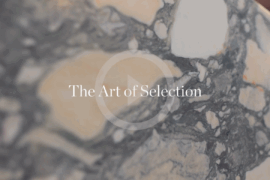
CDK Stone’s Natasha Stengos takes us through its Alexandria Selection Centre, where stone choice becomes a sensory experience – from curated spaces, crafted details and a colour-organised selection floor.
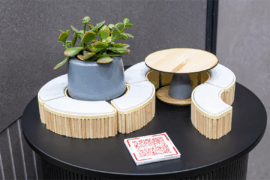
From the spark of an idea on the page to the launch of new pieces in a showroom is a journey every aspiring industrial and furnishing designer imagines making.
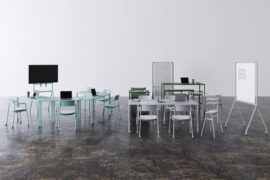
Welcomed to the Australian design scene in 2024, Kokuyo is set to redefine collaboration, bringing its unique blend of colour and function to individuals and corporations, designed to be used Any Way!

London-based design duo Raw Edges have joined forces with Established & Sons and Tongue & Groove to introduce Wall to Wall – a hand-stained, “living collection” that transforms parquet flooring into a canvas of colour, pattern, and possibility.
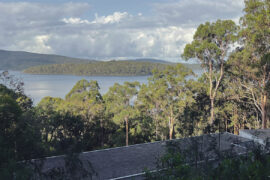
With projects shortlisted for Habitus House of the Year 2025, Anthony Gill and Jason Gibney join the podcast to discuss the state of housing in Australia today.

Making a splash on the hair spa scene, the latest project from X + O makes a little slice of Japan right at home in suburban Melbourne.
The internet never sleeps! Here's the stuff you might have missed
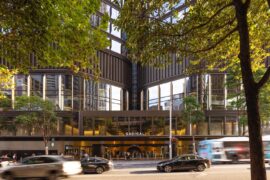
Rising above the new Sydney Metro Gadigal Station on Pitt Street, Investa’s Parkline Place is redefining the office property aesthetic.

The Parliamentary Friends reconvened at Parliament House, uniting political and professional leaders to champion architecture and design.